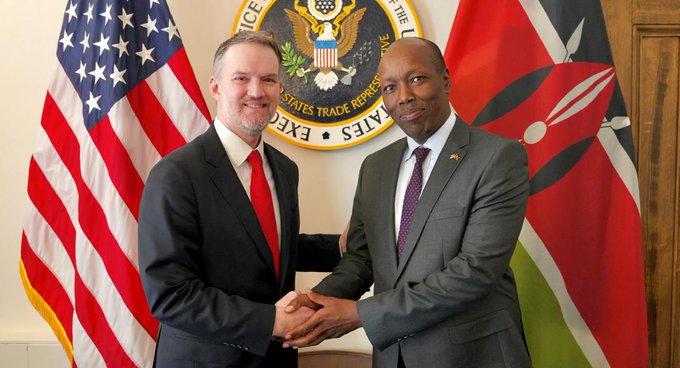

While the tariff increases costs for Kenyan businesses, the government believes it could position Kenya as an alternative sourcing hub in sectors like textiles and manufacturing.
In a statement released on Thursday, Cabinet Secretary for Investments, Trade, and Industry Lee Kinyanjui assured Kenyans that the government is actively working to mitigate any negative effects while seizing new opportunities.
“The new tariff policy presents both challenges and openings for Kenya. While our exporters will face a 10% duty in the U.S. market, it is significantly lower than the rates imposed on key competitors like Vietnam, Sri Lanka, and Bangladesh,” Kinyanjui said.
Despite concerns over increased costs for exporters, the government sees an opportunity for Kenya to strengthen its position in international trade.
“With other textile-exporting countries facing much higher tariffs, Kenya could become an alternative sourcing hub for U.S. buyers,” Kinyanjui explained.
“We encourage investment in local textile production and value addition to attract businesses looking for cost-effective suppliers.”
Beyond textiles, the Ministry highlighted the manufacturing sector as another key area for potential growth.
“We must explore opportunities to expand our manufacturing base. With higher tariffs making goods from other countries more expensive, Kenyan industries—especially in apparel, leather, and agro-processing—can fill the gap and benefit from increased demand,” he added.
To help businesses navigate the changing trade environment, the Ministry of Investments, Trade, and Industry (MITI) is working alongside the Ministry of Foreign Affairs (MFA) to develop a comprehensive export growth plan.
“We are engaging stakeholders and identifying key products that can benefit from this tariff shift,” Kinyanjui stated.
“Our goal is to channel investments into strategic sectors to ensure that Kenya maximizes the benefits of this new trade landscape.”
Kinyanjui said that the Kenyan government recognizes that adapting to the tariff changes will require significant investment in infrastructure, technology, and skills development.
“We must be proactive in expanding production to meet new demand,” Kinyanjui stressed.
“Our focus will be on strengthening supply chains and ensuring that Kenyan products remain competitive on the global stage.”
Despite the challenges, the government remains confident that with the right policies and partnerships, Kenya can turn this situation into a catalyst for economic growth.
“This is not the time to panic,” Kinyanjui concluded.
“It is the time to be strategic, innovative, and bold in securing Kenya’s place in international trade.”
On Wednesday, President Donald Trump swung into action and slapped Kenya with a 10 percent reciprocal tariff on Kenyan exports to America.
Trump said the sweeping tariffs are aimed at levelling the playing field in international trade and countering what he called "cheating" in global trade.









